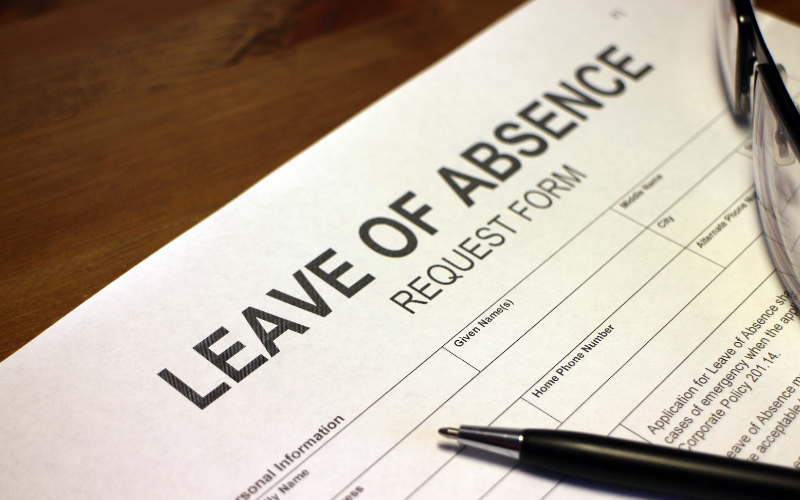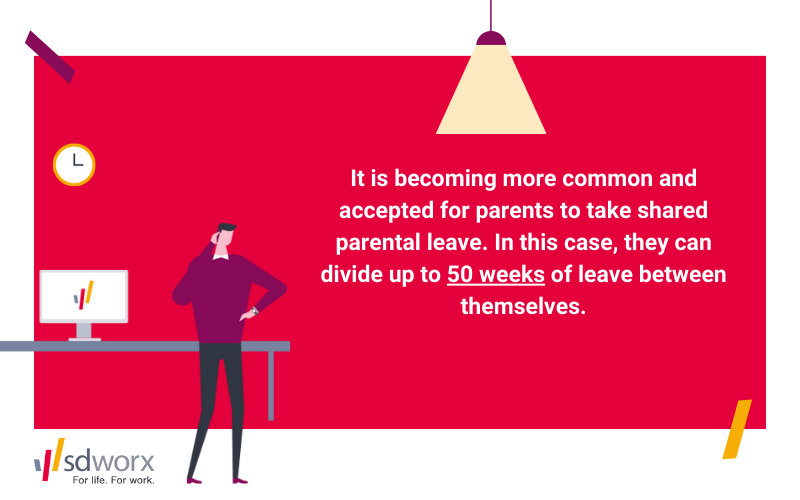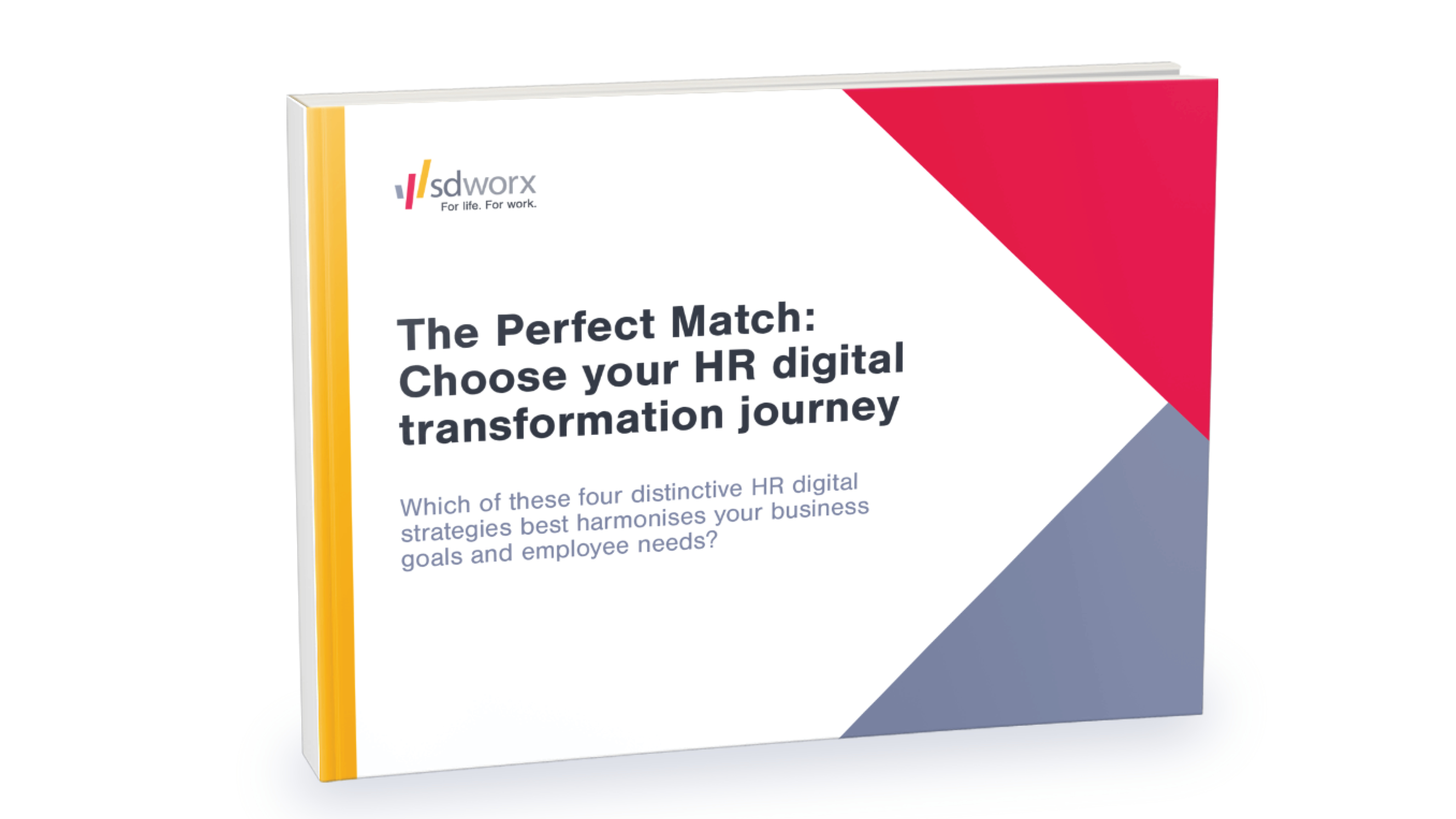Streamline employee absence management with tailored HR software from SD Worx, industry-leading experts in HR and payroll solutions.

Guide to employee absences in the UK
This guide to employee absences in the UK was designed to help HR and payroll professionals navigate the challenges that come with managing staff absences. It will cover the various types of employee absences and provide expert tips on how to create an Absences Management Policy.
Staff absence management is one of a payroll manager's most time-consuming and challenging tasks. There are several types of employee absences - from sick pay or bereavement leave to paternity leave or holidays, the list is long.
As a payroll or HR professional, it’s vital to familiarise yourself with the different forms of absenteeism in the UK. You should also understand the laws and regulations surrounding absenteeism.
With this guide to employee absences in the UK, you will be able to create a professional absence management policy that protects and supports both you and your team.
What is a leave of absence?
A leave of absence can be described as a period of time where a worker maintains employee status whilst taking time away from work. While the government sets out general laws for leaves of absence, individual companies can also create their own policies to manage time off.
For example, by law almost all employees are entitled to 28 days paid holiday per year. This is known as statutory leave entitlement or annual leave. Yet, there are occasions when employees may need unforeseen or extended time off. This may be due to the death of a loved one, an illness, pregnancy, or other personal reasons.

Types of employee absence
This guide to employee absences in the UK aims to cover all types of employee absences.
Employee Sick Leave
Sickness leave is when an employee suffers from an illness or injury. It is one of the most common types of absences. Sickness leave is often unforeseen unless the employee has a planned medical procedure.
In the UK, an employee can take time off work if they’re ill. However, they must give their employer proof of the illness if they’re away from work for more than seven days. This proof is usually in the form of a ‘fit note’ or ‘sick note’ obtained from a GP.
An employee may ask to take their paid holiday for the time they’re off work if they do not qualify for sick pay. In this case, they will be paid Statutory Sick Pay. However, they will not receive this if they don’t qualify for Statutory Sick Pay or are being paid occupational sick pay.
Holiday Leave
Another common reason for employee absence is annual leave. This is when employees take a certain number of days off work to travel, relax or generally take a break from work. Normally, this is agreed in advance with the employer.
While employees are legally entitled to 28 days of annual leave per year, companies will have their policies regarding this. This is usually negotiated with the worker before they start a job.
For instance, some employers offer more time off as the length of the worker’s service goes on, or they may ask that they take holidays at certain times. Many employers reserve the right to refuse holiday requests to suit the needs of the business.
Travel Disruption
In some cases, employees may be late for work, or unable to attend at all due to travel disruptions. This could be caused by bad weather, unreliable public transport services, breakdowns, or cancelled flights for example.
As a result, you may want to think about including some information about this in your absence policy. For example, you may decide to give paid or unpaid time off in these circumstances. Either way, your employees should be informed.
Maternity, Paternity and Adoption leave
These types of leave are typically planned absences providing time for employees to welcome a new child into their family.
Typically, women receive 52 weeks of maternity leave, while men receive up to two weeks. However, this is changing. It is becoming more common and accepted for parents to take shared parental leave. In this case, they can divide up to 50 weeks of leave between themselves.
Adoption leave works in the same way as parental leave, but employees must provide their employer with proof of the adoption or surrogacy.

Bereavement or Compassionate Leave
When an employee suffers an unexpected loss, they may require time off work known as bereavement or compassionate leave. Typically, this is an unforeseen request for leave, which workers may need to come into effect immediately.
There is no statutory bereavement leave in the UK, but many employers address bereavement leave within their employee absence policy. For example, they may allow their workforce a certain amount of paid or unpaid time off in this event.
Jury Service
In some cases, the Courts may summon employees for jury duty. In this case, they may be away from the office for several weeks or even months. Unless there are exceptional circumstances, individuals must complete this service.
Employers must let workers have time off work but may ask that the jury service be delayed if the workers’ absence has serious effects on the business.
Furlough
Due to the coronavirus pandemic, many of us are now familiar with furlough. It is a temporary leave of absence from work. This may be due to an economic crisis within a company, or matters affecting the entire country.
This acts as a leave that employers temporarily enforce whilst keeping employees on the payroll without them working at all. In this case, the length of leave of absence will depend on the company’s ability to get back to business.
Personal Appointments
Workers may need to take a short leave of absence for medical appointments. These can include visiting doctors, dentists, physiotherapists and counselling, amongst other reasons.
While there are statutory rights for this type of leave, companies normally grant it to their workers. It is an important aspect to include within your employee absence policy.
Sabbaticals
Some members of your workforce may wish to take a sabbatical. This is a long, voluntary career break. Individuals may choose to learn new skills, study abroad, travel or use the time for other personal reasons.
Workers plan this leave of absence with employers in advance before their sabbatical begins. There are no laws that deal with career breaks. It is down to the employer to make an agreement with the employees based on their employee absence policy.
Time Off in Lieu (TOIL)
Some employers give workers time off instead of paying for overtime, known as ‘time off in lieu’. For instance, a worker may choose to work extra hours and build up enough to take it as paid time off at a later date.
Not enforced by law, it is the company's decision to choose whether to enforce this policy or not. Before creating your absence policy, you may want to decide if you will offer employees TOIL or pay overtime instead.
AWOL or Lateness
AWOL, or absence without leave, happens when an employee simply doesn’t come to work. They haven’t warned you in advance or called you on the day to let you know.
It’s your choice how to deal with this. For example, you may wish to choose disciplinary action. However, be sure to have this within your policy.
Similarly, if employees are late to work and this continues, you may want to consider disciplinary action. Above all, it’s vital that you have this included within your policy framework otherwise the employee may dispute the disciplinary action.
Exceptional Circumstances
We cannot always predict what life will throw at us. For exceptional circumstances, such as a burglary, a fire, flooding or similar, your employees may need to take sudden and unexpected leave. You should aim to have a policy in place to deal with these unexpected employee absences - paid or unpaid.
How To Create A Good Absence Management Policy
There’s a lot of information to consider when managing employee leaves of absence. If employee leave isn’t managed correctly, it can have a detrimental impact on your business, especially if you have a high number of employees.
With an effective absence management policy, you can take the stress out of managing employee leave for both you and your staff.
This policy should clearly set out what is expected from both the employer and employee in the case of an employee taking time off from work. If you don’t already have a policy in place, you can begin with the following recommendations regarding what to include.
- Reporting absences - clearly state who the worker should make contact with and when.
- Provide clear details of sick pay - this should involve legal and contractual information.
- Request sick notes - you can ask employees to provide you with a sick note after seven consecutive days of sick leave. Make sure to specify if you will action this in your policy so that workers are aware.
- Disciplinary action - make it clear when you’ll enforce disciplinary measures for unplanned leave.
- Flexible working conditions - you might want to consider allowing your workforce to work from home. This can help to reduce stress-related absences as it gives people a better work/life balance.
- Keeping track of absences - include how payroll managers are going to process and keep track of leave.
- Types of absences – consider each of the absences listed above and determine whether information regarding the different types of absences needs including in the policy.
Digital staff absence management
Now you’ve got your policy in place, you may want to consider absence management software. This helps payroll managers with many aspects of leave such as reporting, tracking, accepting and rejecting time off.
Our digital absence management system allows you to follow up on employee absences in a streamlined, time efficient and cost effective way. Not only will our digital solutions empower your employees to request and manage their leave personally, but they also enable line managers to get a clear picture of their team’s leave. This will make reporting back to your HR team a lot easier and help to process payroll smoothly.
Subscribe to our newsletter for practical advice about employee absences, and many other legislation and compliance related topics.
Digital Staff Absence Management
We hope this Guide to Employee Absences in The UK is useful in helping you create a valuable Absence Management Policy.
Once you have a policy in place, you may want to consider absence management software. This helps payroll managers with many aspects of leave such as reporting, tracking, accepting, and rejecting time off.
The SD Worx digital absence management system allows you to follow up on employee absences in a streamlined, time-efficient and cost-effective way.
Not only will the SD Worx digital solutions empower your employees to request and manage their leave personally, but the clever solutions will also enable line managers to get a clear picture of their team’s leave. This will make reporting back to your HR team a lot easier and help to process payroll smoothly.
Get In Touch With SD Worx
At SD Worx, we are experts in creating innovative HR, payroll, and workforce management solutions. From ASDA to Hertz, our award-winning solutions are trusted by huge businesses around the world. Want to know more? Get in touch with our team today.
You can also subscribe to our newsletter for practical advice about employee absences, and many other legislation and compliance-related topics.
Check out this case study where we helped a client better manage their employee absences!


